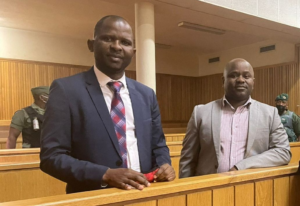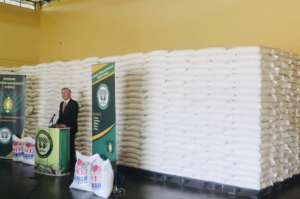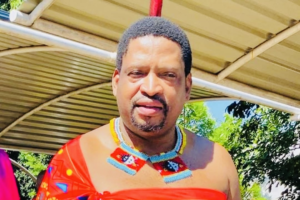A NATION DIVIDED: RURAL VS. URBAN RESPONSES TO POLITICAL REPRESSION IN ESWATINI
Eswatini’s political crisis has exposed deep divisions in how urban and rural communities experience and respond to the monarchy’s repression. By November 2022, these differences had become increasingly apparent, shaping the dynamics of the pro-democracy movement and highlighting the unique challenges faced by citizens in different parts of the country. Understanding these divisions is crucial for building a unified movement that represents the voices of all Swazis.
In urban areas like Mbabane and Manzini, the epicenters of economic activity and political mobilization, the calls for reform have been loud and consistent. Urban residents, particularly young people, have been at the forefront of organizing protests, delivering petitions, and using digital platforms to raise awareness about the monarchy’s abuses. Access to education, technology, and infrastructure has given urban activists tools to connect with each other and the broader international community. Social media has played a pivotal role, allowing urban activists to document human rights abuses, share real-time updates, and mobilize support both locally and globally.
However, this visibility comes at a cost. Urban areas are under heavy surveillance, and protests are met with immediate and often brutal crackdowns by security forces. Police and military presence in cities is pervasive, creating an environment of constant tension and fear. Activists in these areas face higher risks of arrest, detention, and violence, as the regime views their visibility as a direct challenge to its authority.
In contrast, rural communities experience repression in ways that are often less visible but equally devastating. Many rural Swazis live under the control of traditional leaders, who act as intermediaries between the monarchy and the people. These leaders, often aligned with the regime, have significant influence over land allocation, resources, and local governance. Dissent in these areas is frequently silenced through intimidation, social ostracization, or the withdrawal of essential services. For rural residents, challenging the monarchy often means risking not only personal safety but also their livelihoods and access to basic needs.
Rural communities also face unique challenges in accessing information and organizing collectively. Limited internet connectivity and infrastructure mean that many rural Swazis rely on traditional forms of communication, which are more easily monitored and controlled by local authorities. This isolation makes it difficult for rural activists to connect with urban movements or gain visibility for their struggles. As a result, the voices of rural communities are often underrepresented in the broader pro-democracy narrative.
Despite these challenges, rural communities have found ways to resist. Land disputes, such as those in Sigombeni and the Malkerns, have galvanized rural residents to stand up against forced evictions and the exploitation of land by the monarchy and its allies. These struggles are deeply personal, as they involve not only the loss of property but also the erosion of cultural and familial ties to the land. The resilience of these communities in the face of systemic neglect and repression is a testament to their determination to protect their rights and livelihoods.
The divide between urban and rural responses to repression is not just a reflection of geography—it is also a symptom of the systemic inequalities that the monarchy has perpetuated. Urban areas benefit from better access to resources and opportunities, while rural communities are often left to fend for themselves. Bridging this divide is essential for building a unified pro-democracy movement that can challenge the monarchy’s grip on power.
Efforts to unify urban and rural activists are already underway. Grassroots organizations and community leaders are working to create platforms for dialogue and collaboration, ensuring that the voices of rural Swazis are heard and included in the broader movement. Technology, though limited in rural areas, is being used creatively to bridge gaps, with activists sharing updates and strategies through mobile networks and community gatherings.
The international community also has a role to play in supporting these efforts. Advocacy organizations must prioritize amplifying the voices of rural communities and ensuring that their struggles receive the attention they deserve. Resources and training for grassroots activists can help empower rural residents to organize and advocate more effectively.
As an activist, I believe that the strength of Eswatini’s pro-democracy movement lies in its diversity. Urban and rural communities may face different challenges, but their goals are the same: justice, freedom, and dignity for all Swazis. By working together and understanding each other’s struggles, we can build a movement that is truly representative of the nation and capable of bringing about lasting change.
The divide between urban and rural responses to repression is not a weakness—it is an opportunity. It highlights the different ways in which the monarchy’s oppression is felt and resisted, and it underscores the importance of unity in the face of adversity. Together, urban and rural Swazis can break down the walls of division and build a future where every voice is valued, and every community is empowered. The road to democracy is long, but with solidarity and determination, it is one we can travel together.



